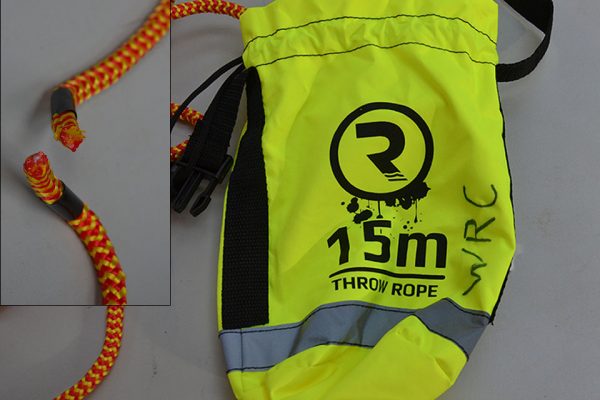Marine Accident Investigation Branch (MAIB) has issued a safety warning following the discovery of defective throw bag rescue lines at a rowing club
British Marine is urging its members to check their throw bag rescue lines after Warrington Rowing Club discovered a defective throw bag rescue line whilst it was conducting boat capsize drills for new rowers at Halton Baths in Cheshire, UK.
A 15m long polypropylene rescue line in a throw bag parted while a young person in the water was being pulled to the side of the pool during a simulated rescue. Nobody was hurt.
The rowing club safety advisor later found another throw bag with a defective rescue line.
Following these discoveries, the Marine Accident Investigation Branch (MAIB) has issued a safety warning and British Marine is asking all its members to check that any throw bag rescue lines they may have be checked for safety.
The MAIB has issued the following safety lessons:
Many commercial craft and recreational vessels carry throw bag rescue lines as part of their safety equipment, and it is estimated that there are tens of thousands in circulation in the UK alone. It is likely that many of these throw bags will lie dormant in a cupboard or locker until they are required to be deployed in an emergency. To ensure that throw bag rescue lines are fit for purpose they should be opened and checked. In particular:
- The entire length of the rescue line should be examined for joins or other discontinuities. This can best be done by feeling along the length of the line with bare hands to identify rough patches or lumps.
- Any knots, splices or other methods of securing the ends of the line to handles, quoits or other parts of the equipment should also be checked for integrity.
- The throw bag should be inspected and tried at regular intervals and repacked according to the manufacturer’s instructions, as otherwise the line may not deploy freely from the bag when required.
- Any throw bag rescue lines found to have joins or discontinuities should be removed from service and the original manufacturer / supplier informed.
To assist with this ongoing investigation, the MAIB is asking for full details of any defective throw bag rescue lines discovered to be passed onto it via This email address is being protected from spambots. You need JavaScript enabled to view it..

